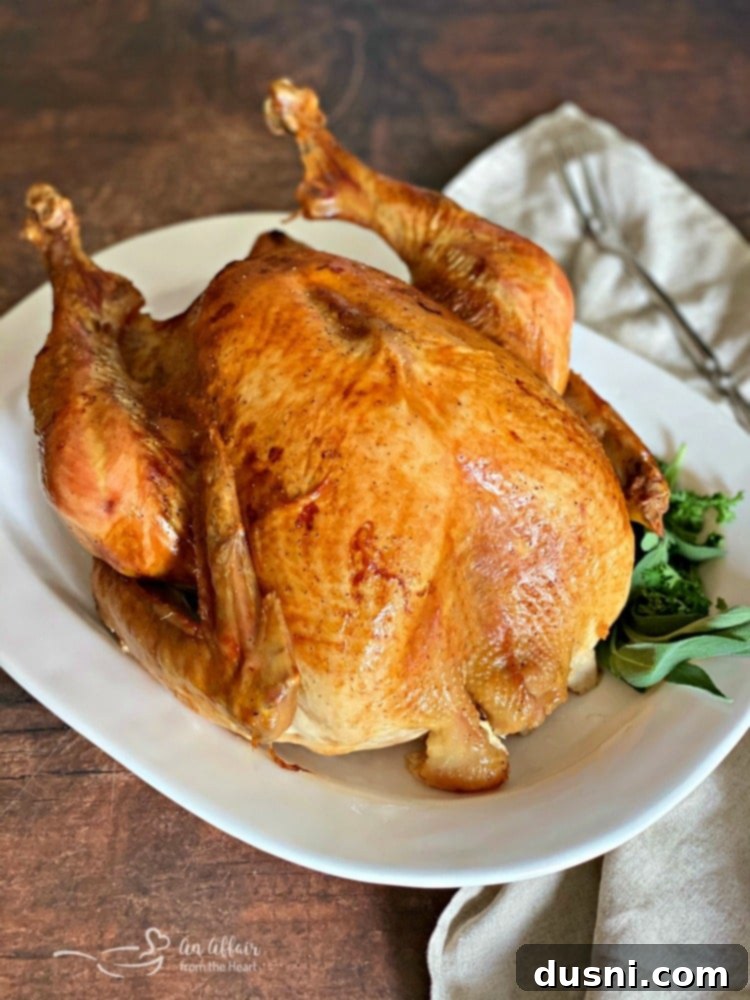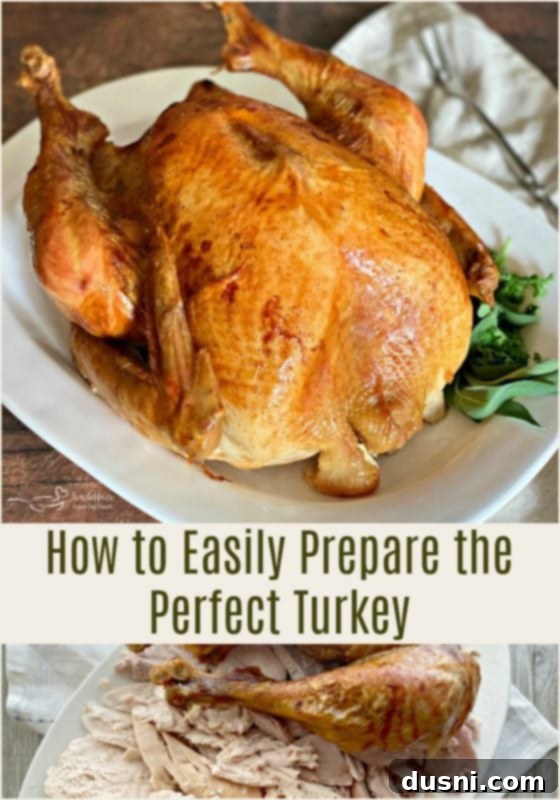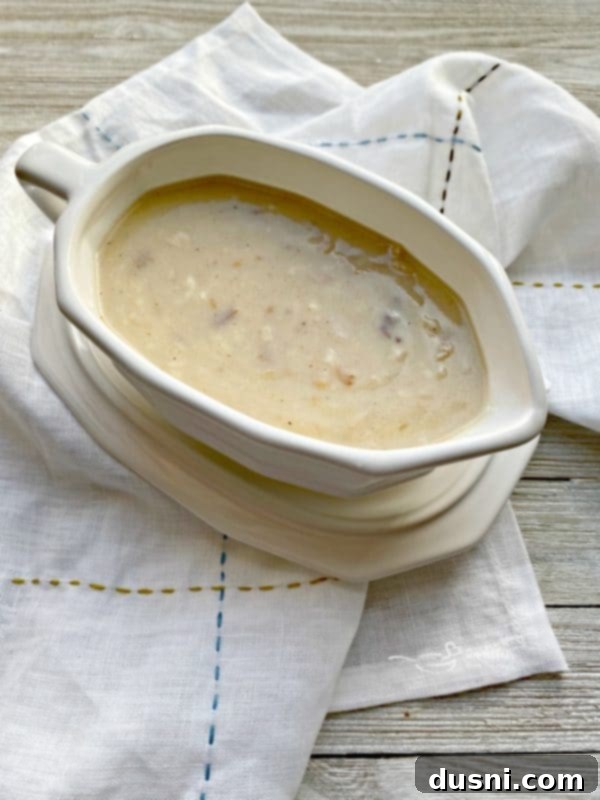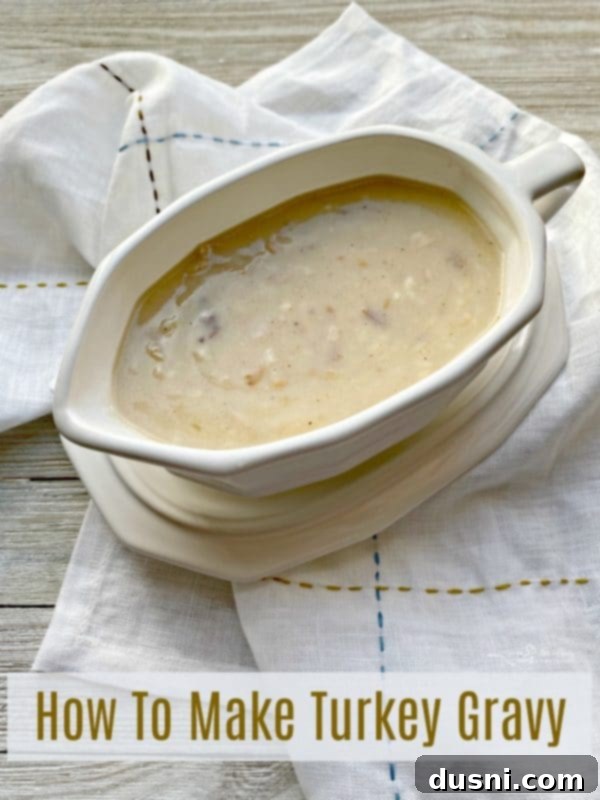Mastering the Holiday Feast: Your Ultimate Guide to Roasting a Perfect Turkey and Crafting Flavorful Homemade Gravy
You absolutely don’t need years of culinary experience to create a show-stopping turkey and a rich, savory turkey gravy for your next big celebration. It’s truly much simpler than most people imagine! This comprehensive guide will walk you through everything you need to know, teaching you how to achieve a perfectly golden, incredibly juicy turkey, complete with a homemade gravy that will have everyone asking for your secret recipe. Get ready to transform your holiday meal into an unforgettable feast with confidence and ease.
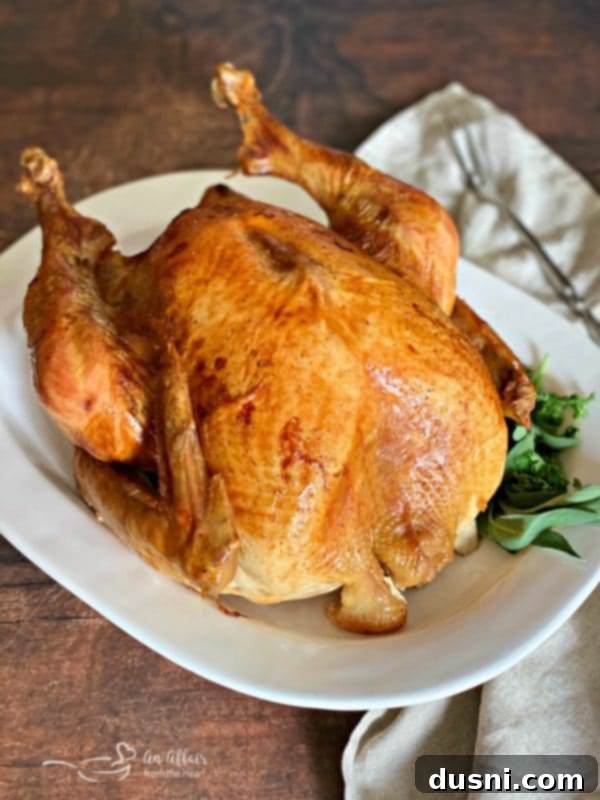
Just a couple of weeks ago, I had the pleasure of spending a wonderful day with my mom. She arrived bright and early at 8 AM, and we dedicated the entire day to meticulously preparing her traditional Thanksgiving meal. While I’ve often made each component of this beloved meal myself, I’d never had the chance to document the process with photographs. So, we worked side-by-side, sharing stories and laughter, as we recreated what I consider the finest meal of the entire year. This cherished experience allowed me to capture every step, ensuring that you, too, can recreate these incredible flavors.
It was a day filled with warmth and memories, one that I will always hold dear. And now, I get to share the fruits of that labor with you, so you can enjoy these time-honored recipes in your own home. Call me biased, but I truly believe my mom’s Thanksgiving dinner is simply the best, and I’m confident you’ll feel the same once you try these methods.
Embarking on Your Turkey and Gravy Adventure!
As the holiday season swiftly approaches, thoughts inevitably turn to the centerpiece of many festive meals: a succulent roasted turkey and its rich, comforting gravy. My husband absolutely adores Thanksgiving, and I wholeheartedly agree – it stands out as one of my most cherished holidays. Our Thanksgiving celebrations are brimming with long-standing traditions, precious time spent with family, and, of course, an abundance of delicious food!
For many, the fast-approaching holiday season can trigger a wave of anxiety, but for me, it’s a source of immense joy. I eagerly anticipate the prospect of cooking elaborate family meals, finding immense satisfaction in the process. I consider myself fortunate to feel so well-prepared, a feeling that often eludes many hosts. My hope in sharing these proven secrets is to help alleviate some of your holiday stress and empower you to enjoy the cooking experience as much as I do. Even if it just takes a small edge off your worries, it’s certainly worth a try!
The sheer satisfaction of presenting a perfectly roasted, golden-brown turkey and a beautifully crafted, flavorful gravy can elevate the entire meal. The moment that magnificent bird emerges from the oven, filling your home with an irresistible aroma, and the gravy is perfectly whisked and ready, appetites instantly go into overdrive. From that point on, you know your meal is destined for success. This guide aims to bring that wonderful feeling to your kitchen.
Essential Tools for Roasting Your Thanksgiving Turkey

Turkey basted with melted butter and seasoned with salt and pepper.
To embark on your journey to a perfect turkey, you don’t need an overwhelming array of kitchen gadgets. In fact, you only need a few crucial components that will make all the difference. These essentials ensure proper cooking, rich flavor, and that coveted golden-brown skin:
- The Turkey Itself: Choose a high-quality bird that fits your guest count. A good rule of thumb is 1 to 1.5 pounds per person. Consider whether you prefer a fresh or frozen turkey, and plan your thawing time accordingly.
- A Reliable Roasting Pan: Preferably one with a lid or deep enough to be tented securely with foil. A sturdy pan will collect all those delicious pan juices vital for your gravy.
- An Accurate Meat Thermometer: This is arguably the most important tool. Forget the pop-up timers often included with turkeys; a quality instant-read thermometer ensures your turkey is cooked perfectly and safely, every time.
- Melted Butter: Essential for achieving that beautiful, crisp, golden-brown skin that defines a perfectly roasted turkey.
- Salt and Pepper: Simple yet powerful, these basic seasonings are all you truly need to enhance the natural flavors of the turkey.
- Optional but Recommended: A turkey baster for even moisture distribution and kitchen twine for trussing (though not strictly necessary for flavor, it helps with even cooking and presentation).
The Art of Roasting a Turkey for Optimal Flavor and Juiciness
At its core, roasting a turkey doesn’t have to be an intimidating culinary challenge. The key steps involve thorough seasoning, ensuring the skin crisps beautifully, and accurately measuring the internal temperature for food safety and optimal juiciness. Follow these steps for success:
Step 1: Proper Thawing is Paramount
First and foremost, confirm that your turkey is completely thawed before you begin the roasting process. This is a critical food safety step and impacts cooking time. You cannot thaw a large turkey overnight at room temperature, as this can create dangerous bacteria growth.
The safest and most recommended method is to thaw it in the refrigerator. Allow approximately 24 hours of thawing time for every 4-5 pounds of turkey. For example, a 15-pound turkey will need about 3-4 days in the refrigerator. Place the turkey in its original packaging on a tray or in a pan to catch any drips.
In a pinch, you can employ the cold water thawing method, but it requires careful attention. This method is faster than refrigerator thawing but it’s not safe to leave the turkey in the sink overnight. Keep the turkey in its leak-proof original wrapper or place it in a large, leak-proof plastic bag. Submerge it in a sink filled with cold water. You’ll need about 30 minutes of thawing time per pound. Crucially, change the cold water every 30 minutes, turning the bag over occasionally, to ensure the water remains cold and safe.
Step 2: Preparing the Bird for Roasting
Once thawed, remove the turkey from its packaging. Don’t forget to reach inside the cavity (both neck and body) to remove the giblet packet and the neck. Rinse the turkey thoroughly inside and out with cool water, then pat it completely dry with paper towels. A dry skin is essential for achieving that desirable crispy, golden-brown finish.
Brush the entire exterior of the turkey generously with melted butter. This not only promotes browning and crisping but also contributes to a richer flavor. For seasoning, a simple yet effective approach is a liberal sprinkling of salt and freshly ground black pepper all over the skin. You can also rub some butter and seasoning under the skin for added flavor in the meat.
Many people, myself included, love to stuff their turkey. I typically stuff mine with my favorite Sausage & Sage Stuffing. It’s a cherished part of our meal, a tradition we’ve followed for generations. If you prefer not to cook stuffing inside the bird, that’s perfectly fine! You can cook it separately in a casserole dish. Just be aware that cooking times will differ for stuffed versus unstuffed turkeys, so always refer to package instructions or reliable cooking charts.
Step 3: Monitoring Internal Temperature for Perfect Doneness
While some turkeys come equipped with built-in pop-up thermometers, I’ve learned from experience not to rely solely on them. Always keep a good quality meat thermometer handy. Insert it into the thickest part of the thigh, ensuring it doesn’t touch any bone, and position it so you can easily read the temperature once the bird is in the oven. The internal temperature for a safely cooked turkey should reach 165 degrees F (74 degrees C) in the innermost part of the thigh, wing, and the thickest part of the breast, and also in the center of any stuffing.
Mastering Turkey Cooking Time and Technique
Preheat your oven to 325 degrees F (160 degrees C). As a general guideline, you can anticipate a cooking time of approximately 13 to 15 minutes per pound for an unstuffed turkey. A 15-pound bird, like the one I prepared, typically takes about 4 hours to cook to perfection. Adjust accordingly if your turkey is stuffed, which usually requires a slightly longer cooking duration.
Begin by roasting the turkey uncovered. This initial exposure to heat helps the skin start to crisp and brown beautifully. You’ll want to baste it a couple of times per hour with the pan juices or extra melted butter to keep the skin moist and promote even browning. About halfway through the total estimated cooking time, or once the turkey has achieved a lovely golden-brown color, cover it. You can use the lid of your roasting pan or create a loose “tent” with aluminum foil. This covering helps prevent over-browning and keeps the turkey moist as it finishes cooking.
Continue basting a couple of times per hour, even while covered, until the internal temperature in the thickest part of the thigh (without touching bone) reaches 165 degrees F (74 degrees C). For safety and tenderness, I personally aim for around 180-185 degrees F (82-85 degrees C) in the thigh meat, as this provides a more tender dark meat. Always use a reliable meat thermometer, not just a pop-up indicator, for accuracy.
The Crucial Step: Resting Your Turkey
Once your turkey reaches the desired internal temperature, resist the urge to carve it immediately. This resting period is critical for a truly juicy bird. Carefully remove the turkey from the oven and tent it loosely with foil. Let it rest for at least 20-30 minutes (for smaller birds) or up to an hour (for larger ones). During this time, the juices that have been pushed to the center of the bird during cooking will redistribute throughout the meat, resulting in a more tender and flavorful turkey.
Before resting, gently tip the turkey to allow any accumulated hot juices from the cavity to drain directly into your roasting pan. These flavorful drippings are a golden treasure – the foundation for your rich, homemade gravy. Collecting every drop is essential for maximum flavor.
At my Mom’s house, preparing the holiday meal is a well-orchestrated affair, and everyone has their designated “duties” when it comes time to get everything ready for the table. My brother expertly carves the turkey, my husband takes on the important task of mashing the potatoes to perfection, and my mom, ever the organizer, helps everyone else get all the delightful side dishes into their serving bowls and onto the table. My personal mission, the role I’ve proudly held for years, has always been making the gravy. There’s something so satisfying about transforming those rich pan drippings into a velvety smooth, flavorful sauce.
Crafting the Perfect Turkey Gravy: A Step-by-Step Guide
When it comes to homemade turkey gravy, there are generally two schools of thought: with or without giblets. Both approaches yield wonderful results, and ultimately, it boils down to personal preference. For me, I firmly believe that including the giblets adds an unparalleled depth of flavor and richness to the gravy, making it truly exceptional.
Step 1: Preparing the Giblets (Optional, but Recommended for Flavor)
If you choose to use the giblets (typically found in a small packet inside the turkey cavity, containing the neck, liver, heart, and gizzards), begin by placing them all into a medium saucepan. Cover them with about 32 ounces of good quality turkey or chicken stock, along with a sprinkling of salt and pepper. For an extra layer of aromatics, you can also add a small diced onion and some celery leaves. Bring the mixture to a boil, then reduce the heat and simmer gently for at least one hour, or until the giblets are fully cooked and tender.
Once cooked, carefully remove the giblets from the stock, allowing them to cool slightly. Strain the stock and set it aside; this flavorful liquid will be a crucial component of your gravy. Once cool enough to handle, finely chop the giblets. The meat on the neck will easily pull off the bone. Discard any bones, gristle, or tough connective tissue. Add the chopped giblets back to the strained stock, and store this mixture in the refrigerator until you are ready to make your gravy. Preparing this a day ahead can significantly reduce stress on the main cooking day.
Step 2: Building the Gravy Base from Pan Juices
Once your beautifully roasted turkey has been removed from the roasting pan to rest (and eventually carve), it’s time to create the gravy base. Place the roasting pan directly on your stovetop, ideally straddling two burners over medium heat. If your pan isn’t stovetop-safe, carefully transfer the pan drippings to a large saucepan.
Allow the pan juices to come to a gentle boil. This also gives you a chance to scrape up any flavorful browned bits from the bottom of the pan, which are packed with concentrated flavor. If there’s an excessive amount of fat, you can carefully skim some of it off the top, but don’t remove it all, as some fat contributes to flavor and texture.
Step 3: Thickening Your Gravy
Add the giblet and stock mixture (if using) to the boiling pan juices. Now, it’s time to create your thickening agent. In a mason jar, combine 1 1/4 cups of flour with 2 cups of milk. Secure the lid and shake vigorously until the mixture is completely smooth and lump-free. Alternatively, an immersion blender can quickly achieve a perfect consistency.
Gradually pour the flour/milk mixture into the simmering pan juices, stirring constantly with a whisk to prevent lumps. Continue to stir as the gravy thickens. You might not need to use all of the milk mixture, as the amount of pan juices can vary depending on the turkey. Keep adding until your gravy reaches your desired consistency – smooth, rich, and velvety.
Step 4: Seasoning and Serving
Once thickened, taste your gravy and adjust the seasoning with additional salt and pepper as needed. This is where you can truly make it your own. Pour the finished gravy into your favorite gravy boat or server.
A pro tip: I always keep a small pot of extra gravy on the stove over low heat. This ensures you have hot refills readily available, so the gravy boat never runs empty during the meal. Few things are more disappointing than cold gravy!
Carving Your Perfect Turkey
Once your turkey has rested sufficiently, it’s ready to be carved. Carving correctly ensures that everyone gets a juicy piece of meat and makes for an impressive presentation. Start by removing the legs and thighs, separating them at the joint. Then, slice the breast meat against the grain, starting from the top. Arrange the carved meat beautifully on a platter, perhaps garnished with fresh herbs, and serve alongside your magnificent homemade gravy.
Complement Your Feast: My Family’s Favorite Thanksgiving Sides
A perfect turkey deserves equally perfect companions. These family recipes for Thanksgiving sides have graced our holiday table for years and are sure to complete your festive spread.
I sincerely hope these recipes and tips help you enjoy the holidays even more. May your perfectly roasted turkey and savory homemade gravy bring abundant smiles and completely satisfy every appetite at your table! Remember, the true essence of the holiday season isn’t about perfection, but about quality time with your beloved friends and family. So, relax, don’t stress, and savor every moment. Have a happy and blessed holiday season!

Ready to dive into these easy-to-follow instructions and detailed recipes to prepare a turkey and turkey gravy like a seasoned pro? Let’s get cooking! 
LIKE THIS RECIPE?
Don’t forget to give it a ⭐️⭐️⭐️⭐️⭐️ star rating and
leave a comment below the recipe!
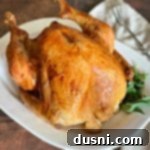
Print Recipe
How to Prepare Turkey & Turkey Gravy Like a Pro
Equipment
-
Wusthof 9740-1 CLASSIC Two Piece Carving Set
-
Norpro Deluxe Stainless Steel Baster with Injector and Cleaning Brush
-
Thermapen Mk4 Instant-read Thermometer
-
Granite Ware Covered Oval Roaster, 13 inches, Black
Ingredients
- 1 15 pound whole turkey with giblets
- 32 ounces Chicken or Turkey Stock
- 1 cup water
- 1 stick melted butter
- 1 1/4 cup flour
- 2 cups milk
- Salt & Pepper
Instructions
-
Remove the giblets from the defrosted turkey, set aside. Rinse the turkey inside and out with cool water, then pat completely dry.
-
Place turkey in a roaster, breast side up.
-
Brush turkey all over with melted butter. Season generously with salt and pepper.
-
If you are stuffing the bird, now is the time to do so.
-
Bake at 325°F (160°C) according to the weight of your turkey per package instructions (approx. 13-15 minutes per pound for unstuffed). Bake uncovered until the turkey becomes golden brown (about halfway through baking time/2 hours for a 15lb bird). Baste turkey a couple of times per hour. Then, cover loosely with a lid or foil tent and continue baking until a meat thermometer inserted into the thickest part of the thigh reaches an internal temperature of 165°F (74°C), or up to 185°F (85°C) for extra tender dark meat. Do not rely solely on pop-up timers. Continue basting throughout the baking process.
-
Typically I prepare the giblets the day before I make my turkey, but you can do it while the turkey is cooking, too. The giblets and the stock they provide will be added to the turkey gravy.
-
In a pot on the stove, cover giblets with 32 ounces of chicken or turkey stock, and give them a good sprinkling of salt and pepper. I also add in a small onion diced and the leaves from a bunch of celery stalks. Cover them and bring them to a boil. Turn down and simmer them for one hour. Add in one cup of water.
-
Remove giblets, chop the meat up fine, removing any skin or bones. Drain the stock, and pour into a mason jar, add chopped meat and store in the fridge until you are ready to make your gravy.
-
When the turkey is done, remove it from the roaster to carve and let it rest (covered) for 20-30 minutes. Place the roaster on the stove, we always use two burners. Turn the temperature to medium and get the juices from the bird boiling. Add in the giblet stock.
-
Mix flour and milk in a jar by shaking, or use your emulsion blender. Make sure there are no lumps! Slowly pour into the roaster and stir constantly with a whisk to thicken your gravy. You might not need all of the milk mixture, as some turkeys will produce more juice than others. Taste and salt and pepper as needed.
Notes
Baking time will significantly differ if your turkey is stuffed or unstuffed. The cooking time provided here is for an unstuffed bird.
Hint: Keep any extra gravy hot on the stove over low heat while you eat, so you can easily refill that gravy boat whenever it becomes empty!
Nutrition
